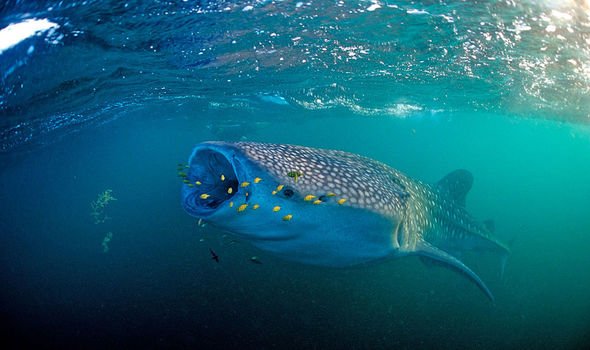5 Reasons Not to Swim with Whale Sharks in Oslob
Swimming with whale sharks in Oslob was controversial once it started. Many people are under the delusion that there are no negative impacts on human-whale shark interaction, and may even say that it helps their conservation! Learn more about why you should not support this activity.
Contact & Interaction
Most people do not follow the code of conduct when interacting with a whale shark. Competitors who violate the rules received during briefings will not be penalized.
The Whale Shark in the Philippines is protected and under Republic Act 9147, the Philippine Wildlife Resources and Habitats Conservation and Protection Act, it is illegal to disturb them.
While swimming with whale sharks in Oslob, an experiment was done which revealed that the participants had a large number of ‘active touches’ of the whale shark, which is prohibited by the rules.
In 89% of the events, contact is initiated by one of the baiters touching the shark’s mouth, or simply placing a foot on the shark’s nose, pushing it aside. This usually prevents the shark from hitting the boat, begging for more food. This shark show has also been seen to sometimes pet the sharks and move them away in an attempt to dissuade the shark from eating because they want to save the bait for the next group of guests/the next day.

Behavioral Features & Bodily Injuries
Today, the regular feeding of whale sharks in Oslob means to them that boats and people are food. Oslob’s Whale Sharks now actively approach boats instead of avoiding them.
Subsequently, whale sharks develop inherent risks that can occur outside of protected waters when sharks find any fishing boat and attack it again in the hope of getting another handout of bait, since the whale shark is usually a very migratory species.
So, what is so bad about direct contact and interaction with people and boats?
Sharks are usually not affected by the types of bacteria humans carry on their skin and are very vulnerable to infection during too close human contact.
Excessive friction against the side of the feeder boat is the cause of many whale shark injuries. These lesions, which appear mostly as white patches and have a spongy surface, are the result of the skin around the mouth reacting to repeated rubbing. The wounds may also be red and inflamed.
None of the new food lured sharks have these scars, and it takes less than a week of feeding from boats to induce them. The same can be said for the white scars on the leading edge of the first dorsal fin where friction occurs due to contact with the hull and outrigger of the boats.
While motor boats are prohibited from operating in the whale shark swimming area at Oslob, marine animals are no longer able to distinguish between the type of boat and may try to approach the propeller boat. In 2012, there were cases of sharks falling under a working propeller of a speedboat, as a result of which they received severe head and eye wounds.

Changing Migration Routes
Whale Sharks are a highly migratory species and usually follow nutrient-rich waters and seasonal accumulations of plankton. Whale Sharks are known to travel long distances across various countries and oceans. One animal tagged in the Philippines was found near Taiwan a few days later!
The natural season for whale sharks in Oslob lasts for only 60 days. However, as fishermen bring food from other areas to lure the sharks, they now stay in Oslob’s waters for much longer instead of moving on to other areas of the ocean. Since 2013, the record for a whale shark to stay in Oslob, an individual named Mr. Bean, has been here for 392 days!
Changes in seasonal migration patterns could affect the future breeding prospects of whale sharks, hindering their primary biological mission. Little is known about the reproduction of whale sharks, and any negative effect on their cycle could seriously affect the survival of this species.
You can see them on the high seas
Last but not least, one of the best reasons to avoid Oslob’s “whale shark circus” is that you can see these sharks on the high seas, in other parts of the Philippines!
There are many diving sites in the Philippines where whale sharks appear, and being migratory, they often pass along coastlines. An encounter with a whale shark on the high seas is full of surprise, mystery, adrenaline and admiration. Imagine a caged lion at a zoo, and compare it to meeting the king of beasts face to face on a national park safari in Africa. The difference and quality of experience is quite high!
